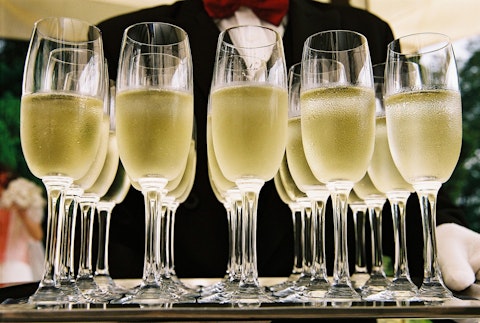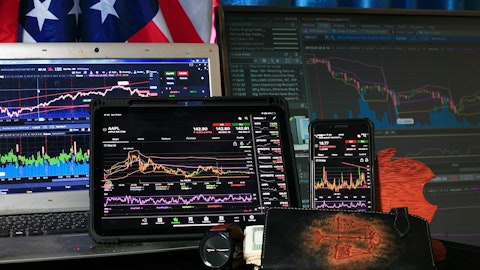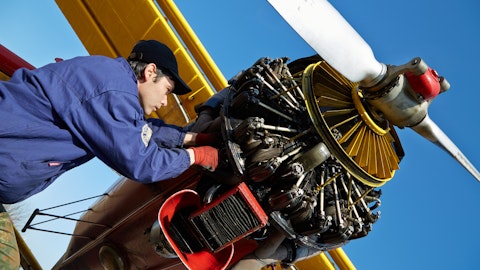In this article, we are going to discuss the 16 best-selling Champagne brands in the world. You can skip our detailed analysis of the global Champagne market, the largest Champagne producer in the world, and the role of Champagne in Formula 1, and go directly to 5 Best-Selling Champagne Brands in the World.
Birthdays, engagements, weddings and Christmas – Champagne is synonymous with celebrations. But while its Italian cousin Prosecco is the drink of bottomless brunches and English Sparkling Wine is its up-and-coming counterpart, Champagne has long been associated with high society.
Although first produced in the Champagne region of France in the 1600s, the drink has its origins in the Roman period, with the enterprising invaders producing wine in the chalky terroir the area is renowned for.
Global Champagne Market:
Champagne sales have bubbled to their highest point yet. For the first time ever, sales of the sparkling wine topped $6.5 billion in 2022, as French houses saw their exports surge to keep up with the roaring post-lockdown demand. The figure is 1.6% higher from 2021, as the total shipments hit 326 million bottles, according to a statement by Comité Champagne, a trade organization for the industry.
Just over 57%, or 187.5 million bottles, of that Champagne made its way abroad last year, a boost in the stats from both 2021, with an increase of 1.4%, and a decade ago, when exports made up only 45% of total sales.
The statement also notes that 2022 brought a bountiful harvest that was robust in quantity and quality, and those grapes should help replenish Champagne stocks to meet the current demand for bubbly. Many houses, including Moët Hennessy, which were running out of their finest golden elixir last year, will be looking to replenish their stash.
France ranks among the Top Wine Producing Countries in the World.
Largest Champagne Producer in the World:
Moët Hennessy Louis Vuitton SE (OTC:LVMUY), through its various houses, is the largest producer of Champagne in the world. The consolidé MHCS boasted an annual revenue of over $2.2 billion in 2022. Commonly referred to as LVMH or Louis Vuitton, Moët Hennessy Louis Vuitton SE (OTC:LVMUY) is a French luxury conglomerate formed after the $4 billion merger of the renowned fashion house Louis Vuitton and wines and spirits company Moët Hennessy in 1987.
In April, Moët Hennessy Louis Vuitton SE (OTC:LVMUY) became the first European company to surpass $500 billion in market cap, when the company reported a 17% rise in first-quarter sales, more than double the analysts’ expectations. Stock price of the French conglomerate reached an all-time high of $199.59 in July but has slumped down to $160.1 as of today. The stock has been weighed down by the slowing economies in the U.S. and China, persistent inflation, and rising interest rates.
Diageo plc (NYSE:DEO), the largest spirits maker in the world, also owns a 34% stake in Moët Hennessy. There has been a lot of market talk about Diageo plc (NYSE:DEO) wanting to buy out LVMH to gain full ownership of Moët Hennessy, but the luxury goods company has denied being in talks to sell its 66% stake in the Champagne and cognac maker. At current market valuation, the deal would cost Diageo plc (NYSE:DEO) an estimated $12.9 billion.
As of Q2, 2023, 28 hedge funds hold stake in Diageo plc (NYSE:DEO) based on Insider Monkey database, with Markel Gayner Asset Management boasting the largest stake at 1.35 million shares, valued at around $234.2 million. Diageo plc (NYSE:DEO) is also among Warren Buffett’s Recent Buys.
Champagne in Formula 1:
Spraying Champagne on the podium of an F1 race is something that every driver in the sport dreams of. In the case of some drivers like Lewis Hamilton and Michael Schumacher, the contents of hundreds of bottles have been emptied on top of numerous podiums around the world.
In the 70+ years of F1, several Champagne brands have been sprayed at the post-race celebrations. However, the sport switched to ‘Ferrari Trento’ Champagne in 2021 in a bid to save cost. In doing so, the podium ceremony has become significantly cheaper for Formula 1, with a three-liter bottle of the sparkling wine costing around €300 ($322).
That means around $1,288 worth of champagne is sprayed on the podium at the end of every race. In comparison, the ‘Carbon’ Champagne bottles used in 2017, 2018, and 2019 cost nearly thrice as much per piece as the entire current podium bottles combined – at around €3,000 ($3,222) per bottle. Ferrari Trento has a contract with F1 until the end of 2025 and is likely to stay.
While being colloquially referred to as ‘Champagne’, the content of the Trento bottles used on the podium is not technically so. Champagne is a sparkling wine that specifically originates from the Champagne region of France, while a sparkling wine made anywhere else on Earth cannot be called Champagne by definition – similar to the difference between Scotch and regular whiskey. Since the Trento sparkling wine originates in Italy, it cannot be called Champagne by the very definition of the word.
As we mentioned in our article – 20 Countries that Drink the Least Beer per Capita – the celebratory Champagne is replaced by a pink and sugary water drink for the Saudi Grand Prix, due to the Islamic country’s strict laws against alcohol.
With that said, here are the Best-Selling Champagnes in the World.

Public Domain/Pixabay
Methodology:
To collect data for this article, we have referred to a number of sources, such as VinePair, Reddit, Drinks International etc., looking for the Top-Selling Champagne Brands in the World. We ranked the following brands by their annual production volumes, with approximate figures gathered from the aforementioned sources. When two brands had the same production volume, we ranked them by their total exports to the U.S. market.
If you also like your alcohol distilled, here are the 25 Most Popular Spirits in the World.
16. Billecart-Salmon
Annual Production Volume: 2 million bottles
Founded in 1818 with the marriage of Nicolas François Billecart and Elisabeth Salmon, Billecart-Salmon Champagne is still majority-owned by the Billecart family today, who own a 55% stake. The remaining 45% is held by the Frey group, which owns Château La Lagune in Bordeaux, Paul Jaboulet Ainé in the Rhône, and Château Corton C in Burgundy.
The Billecart-Salmon Champagne House boasted a revenue of $86.6 million in 2022.
15. Ruinart
Annual Production Volume: 2.5 million bottles
Ruinart was the first sparkling wine house in Champagne, founded in 1729 by Nicolas Ruinart. Now part of the LVMH group, the Ruinart House does not have significant vineyard holdings, so a high percentage of production grapes are purchased from growers. Ruinart wines tend to be Chardonnay dominated, silky, and refined.
Ruinart is not only the oldest established Champagne House, but it was also the first to create a rosé Champagne, shipping its first rosé in 1764 across Europe.
Ruinart sits among the Top-Selling Champagnes in the World.
14. Bollinger
Annual Production Volume: 3 million bottles
Since 1829, Bollinger has been producing great Champagnes with a powerful, sophisticated, and complex style. Over the years, Bollinger has built its vineyards at the heart of the finest crus in Champagne. Champagne Bollinger’s 179 hectares of vines are made up of 85% Grand and Premier Crus and are farmed by growers across 7 separate vineyards.
Since its inception, Bollinger has been committed to sustainability and responsible farming. In 2012, the house was the first in France to be certified as ‘High Environmental Value’. Two years later, it made history again by becoming the first to receive a certification in sustainable viticulture in Champagne.
13. Perrier-Jouët
Annual Production Volume: 3 million bottles
Influential in the world of bubbly for more than two centuries, Perrier-Jouët was among the first Champagne houses to regularly stamp its cork with the date of a blend, also known as its vintage.
Ownership changed a lot over the years before the house settled with Pernod Ricard in 2005. Through it all, Perrier-Jouët has managed to retain an impressive 65 hectares that accounts for 25% of its 3 million-bottle production. Fruit is sourced from 70 villages, with half the holdings in the Côte des Blancs due to the Chardonnay focus.
12. Louis Roederer
Annual Production Volume: 3.2 million bottles
In 1845, Louis Roederer acquired 15 hectares in the Grand Cru vineyards of Verzenay. The idea – which was quite unusual at a time when grapes had little value – was to become a wine grower in order to master the entire process of creating his vintage wines. Ever since then, every Louis Roederer vintage originates exclusively from the house’s own vines, which is rare indeed in the Champagne region.
The House of Louis Roederer’s annual exports total three million bottles around the world, making it one of the Top 50 Champagne Brands.
11. Canard-Duchêne
Annual Production Volume: 4 million bottles
Canard-Duchêne is a Champagne House founded in 1868, currently owned by the Thiénot group, owner of its own label Champagne Thiénot, plus Joseph Perrier and Marie Stuart.
Today, Canard-Duchêne is sold in over 130 countries across the world with an annual production of 4 million bottles, with claims that one bottle is opened somewhere around the globe every 15 seconds.
10. Lanson
Annual Production Volume: 4 million bottles
Founded in 1760, Maison Lanson is one of Champagne’s oldest houses, making great Champagne for 260 years and counting. Lanson matures its Champagnes for at least four years in its cellars to develop outstanding complexity.
Since 2006, the brand has been owned by the Lanson-BCC group, which is headed by Bruno Paillard (who also owns the Bruno Paillard Champagne House). Lanson BCC had a revenue of $274.5 million in 2022.
Lanson is among the Top 10 Most Popular Champagne Brands.
9. Piper-Heidsieck
Annual Production Volume: 4 million bottles
Since 1785, Piper-Heidsieck has proven its innovative prowess in producing exceptional wines. The Champagne House’s quest for excellence and open-mindedness is reflected in the entire range created by Chief Winemaker Émilien Boutillat, who safeguards Piper-Heidsieck’s unique style. The house continues to showcase its commitment towards a conscientious, sustainable future by joining a global community of B Corp Certified companies.
In the late 1980s, Piper-Heidsieck became part of the Rémy Cointreau wine and spirits group. An estimated 45,000 9-liter cases of the iconic brand were exported to the U.S. in 2021.
8. Pommery
Annual Production Volume: 4.5 million bottles
Champagne Pommery was founded as Pommery & Greno by Alexandre Louis Pommery and Narcisse Greno in 1858. Pommery was the first house to commercialize a Brut Champagne in 1874.
The brand is currently owned by the Vranken-Pommery Monopole Group (located in Reims), which also owns Heidsieck & Co Monopole And Vranken, Château la Gordonne, Domaine Royal de Jarras, and Rozès. The group had a turnover of $291.8 million in 2022.
7. Dom Pérignon
Annual Production Volume: 5 million bottles
With roots dating back to the 17th century, Dom Pérignon is one of the most long-standing brands in the LVMH empire. Its first vintage was introduced in 1921, and its latest vintage is a 2009. LVMH assumed control over the brand when it acquired Moët & Chandon.
Dom Perignon is a big-ticket champagne that does well in high-end bars – particularly hotels. It was found to be the number one Champagne in 10% of Drinks International’s polled bars and a top-three serve in about a quarter.
Dom Pérignon Champagne ranks among the Most Popular Champagne Brands in the World.
6. Taittinger
Annual Production Volume: 5.5 million bottles
Taittinger’s non-vintage Brut Champagne is a refreshing, fruit-driven bottle of bubbles. You have undoubtedly come across it in your local wine store, given that the Champagne House is one of the region’s largest producers.
It’s common practice for Champagne Houses to buy, rather than grow, the majority of the grapes used in their production. With more than 700 acres of vines, however, Taittinger is one of the region’s largest vineyard owners. Despite those extensive plantings, Taittinger also buys up to 50% of the grapes it uses to supply its substantial output.
Taittinger is one of the best Champagne brands in the world.
Click to continue reading and see the 5 Best-Selling Champagne Brands in the World.
Suggested Articles:
- Top 20 Wine Drinking Countries in the World
- 25 Best Bourbon Whiskeys Under $50
- 20 Most Popular Liquor Brands in America
Disclosure: None. 16 Best-Selling Champagne Brands in the World is originally published on Insider Monkey.





